Art of the state: Pyongyang propaganda posters to be exhibited in China
These posters have rarely seen outside North Korea and will be shown in Beijing this week
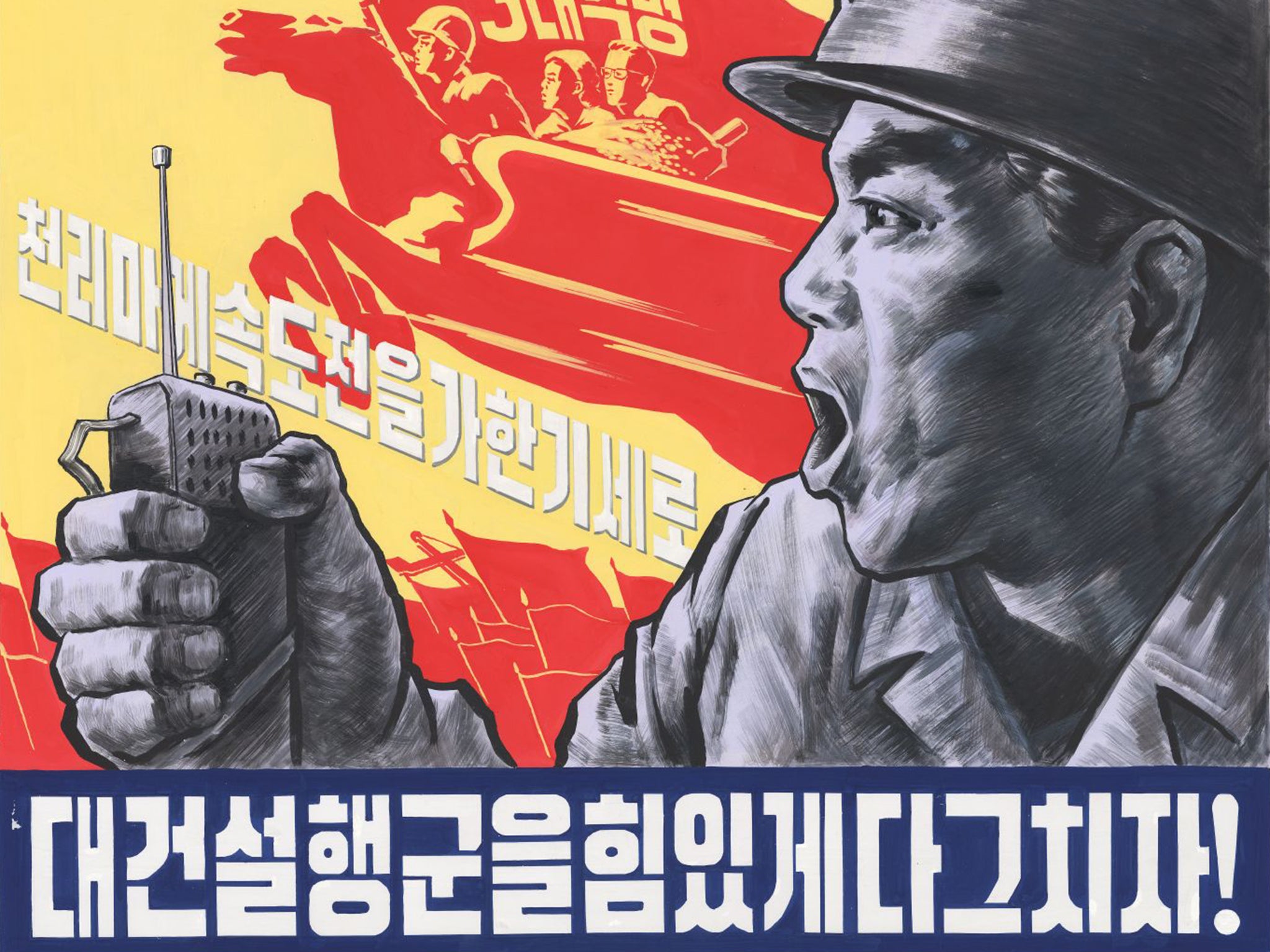
Your support helps us to tell the story
From reproductive rights to climate change to Big Tech, The Independent is on the ground when the story is developing. Whether it's investigating the financials of Elon Musk's pro-Trump PAC or producing our latest documentary, 'The A Word', which shines a light on the American women fighting for reproductive rights, we know how important it is to parse out the facts from the messaging.
At such a critical moment in US history, we need reporters on the ground. Your donation allows us to keep sending journalists to speak to both sides of the story.
The Independent is trusted by Americans across the entire political spectrum. And unlike many other quality news outlets, we choose not to lock Americans out of our reporting and analysis with paywalls. We believe quality journalism should be available to everyone, paid for by those who can afford it.
Your support makes all the difference.A set of North Korean propaganda posters is set to go on show in Beijing this week in a rare exhibition outside of the country.
North Korea tour company owner Nicholas Bonner, a Briton, has found a way to put a selection of striking replica posters on show without falling foul of officials in the secretive state. In 2010, Dutchman Willem van der Bijl was arrested and detained in Pyongyang on espionage charges after exporting propaganda posters and he was eventually made to sign a “confession” before being released.
Mr Bonner, the founder of Beijing-based Koryo Tours, commissioned Pyongyang artists to paint reproductions of some he had seen in the country. As he commissioned them for artistic rather than political purposes, from photographs and art books he had accrued during visits to North Korea, he was allowed to take them into China.
On Friday, the posters, a selection of which are shown here, will go on show at the Pop-Up Beijing boutique in the Chinese capital.
As one might expect, the supposed evils of the United States are a recurring theme in the images. But North Korea propaganda artists are expected to produce less fiery public advice posters too. “I’ve seen all sorts of posters,” said Mr Bonner, who collects North Korean art. “You get the ‘Death to America’ stuff but I’ve seen similar posters stylistically in residential buildings that say ‘Remember to turn the lights out’ or ‘Look after water and switch taps off’.”
It is near impossible to be a private artist in the isolated country and all professional artists must work for the state, with many employed to create striking propaganda posters to help keep the general population on message.
Most North Korean artists spend six to eight years at Pyongyang University of Fine Art or a regional college, aspiring to work at one of four art studios in the capital. Studios grade artists on a zero-to-five scale (with zero being the best), with the elite getting their work exhibited and the title of People’s Artist. Propaganda artists are on a lower rung, but they are given almost complete artistic freedom to illustrate a poster with a slogan.
Propaganda posters first came to prominence in the country during the 1950-53 Korean War, and early posters tended to show literal interpretations of slogans.
Self-reliance and pride in work are also common subjects, and North Korean propaganda posters almost never feature subjects making eye contact. “That rule comes from instruction,” said Mr Bonner. “We don’t know why they have it but it may be due to the constant idea they portray about looking forward to the bright future.”
“It’s the same with the statues of the leaders in Pyongyang,” he says, “They all look like they are looking forward to the future. But it could also partly be because of politeness levels in North Korea, where it’s rude to stare straight at someone.”
Bonner lore: the posters explained
1. Slogan: ‘Seed revolution is the core of agricultural development’ (1980s)
‘I’ve been to farms and seen the technical officers there checking everything is being done correctly. They do go around with magnifying glasses like in this poster.’
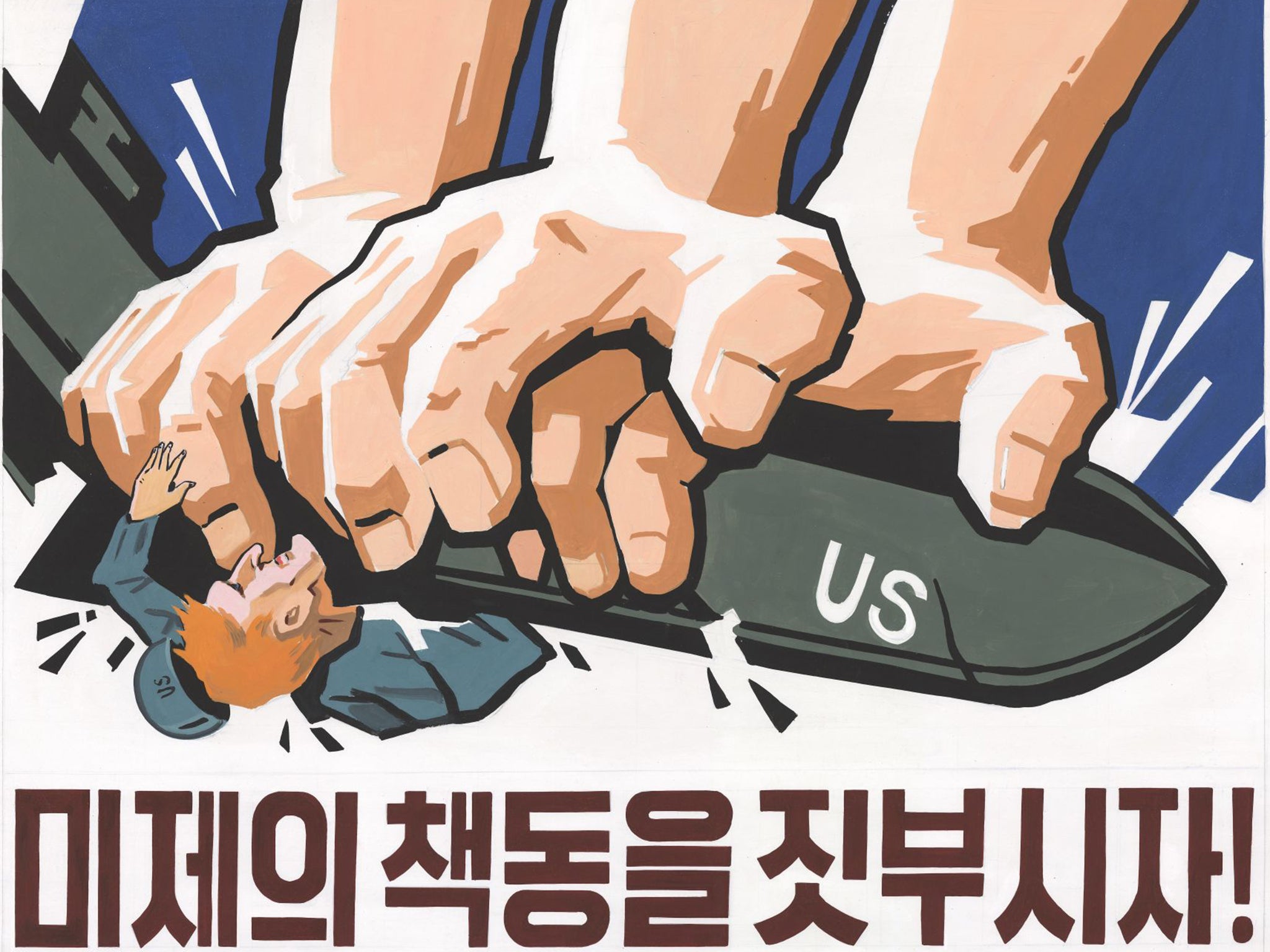
2. ‘Let’s destroy the manoeuvres of the US imperialists’ (2006) ‘This image was around during George W Bush’s presidency.’
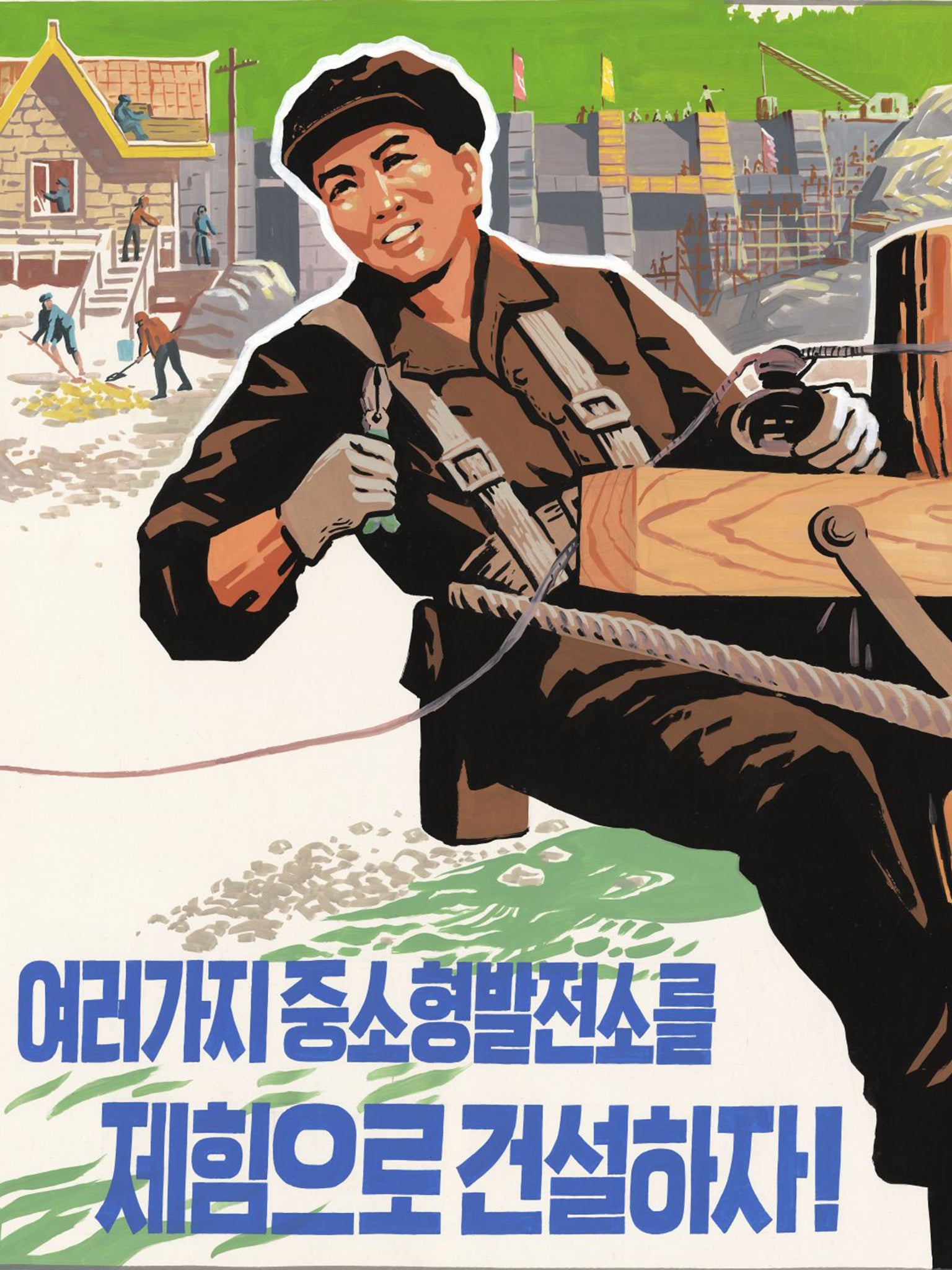
3. ‘We build small and medium power stations by ourselves’ (1980s or 1990s)
‘It’s the same mentality as Made in Britain, reinforcing independence and self-reliance.’
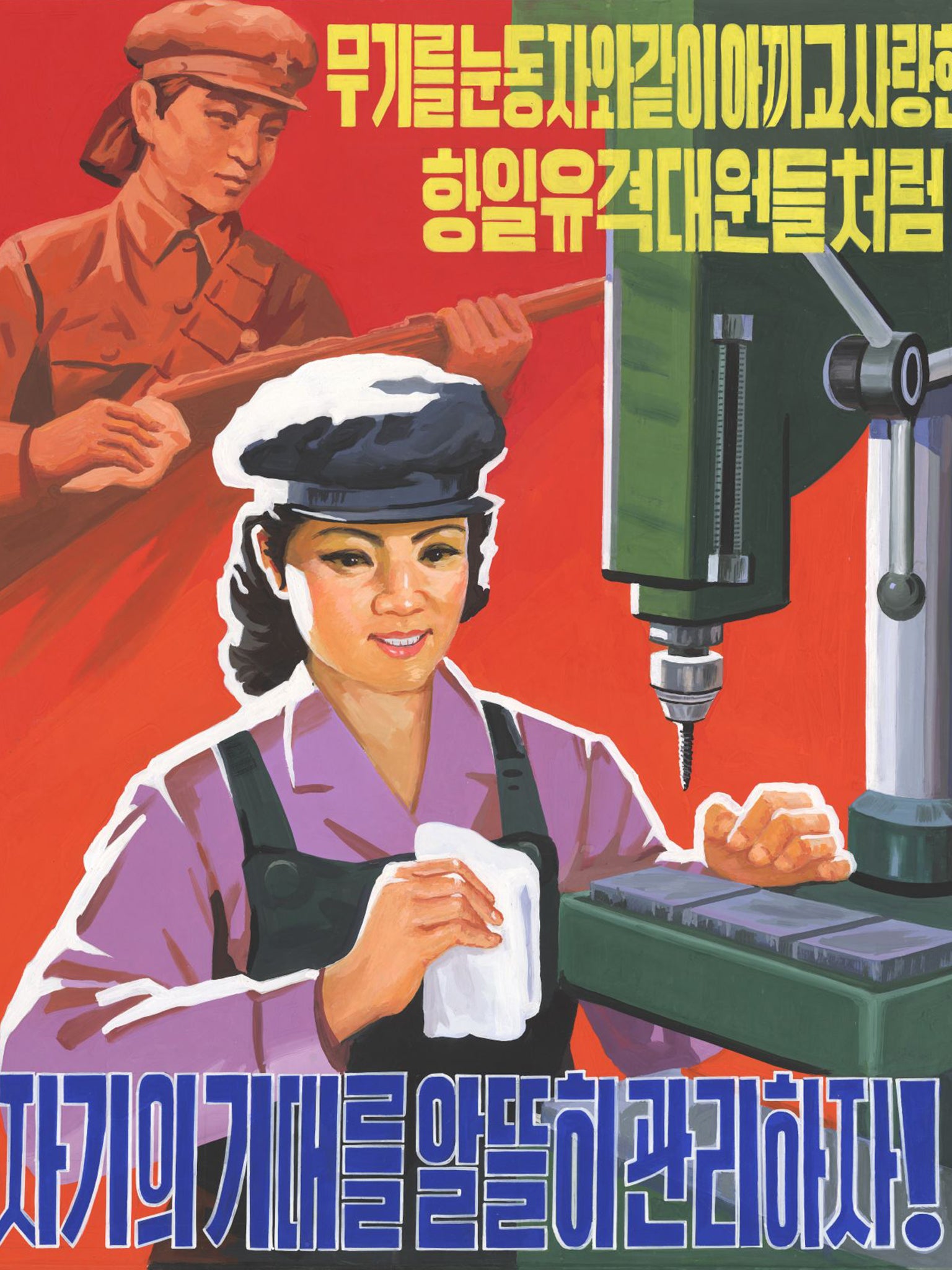
4. ‘Love our machines like the anti-Japanese guerrillas who loved their weapons like the pupils of their own eyes’ (1990s)
‘This is just about looking after machinery, basically. It is pure health and safety at work.’
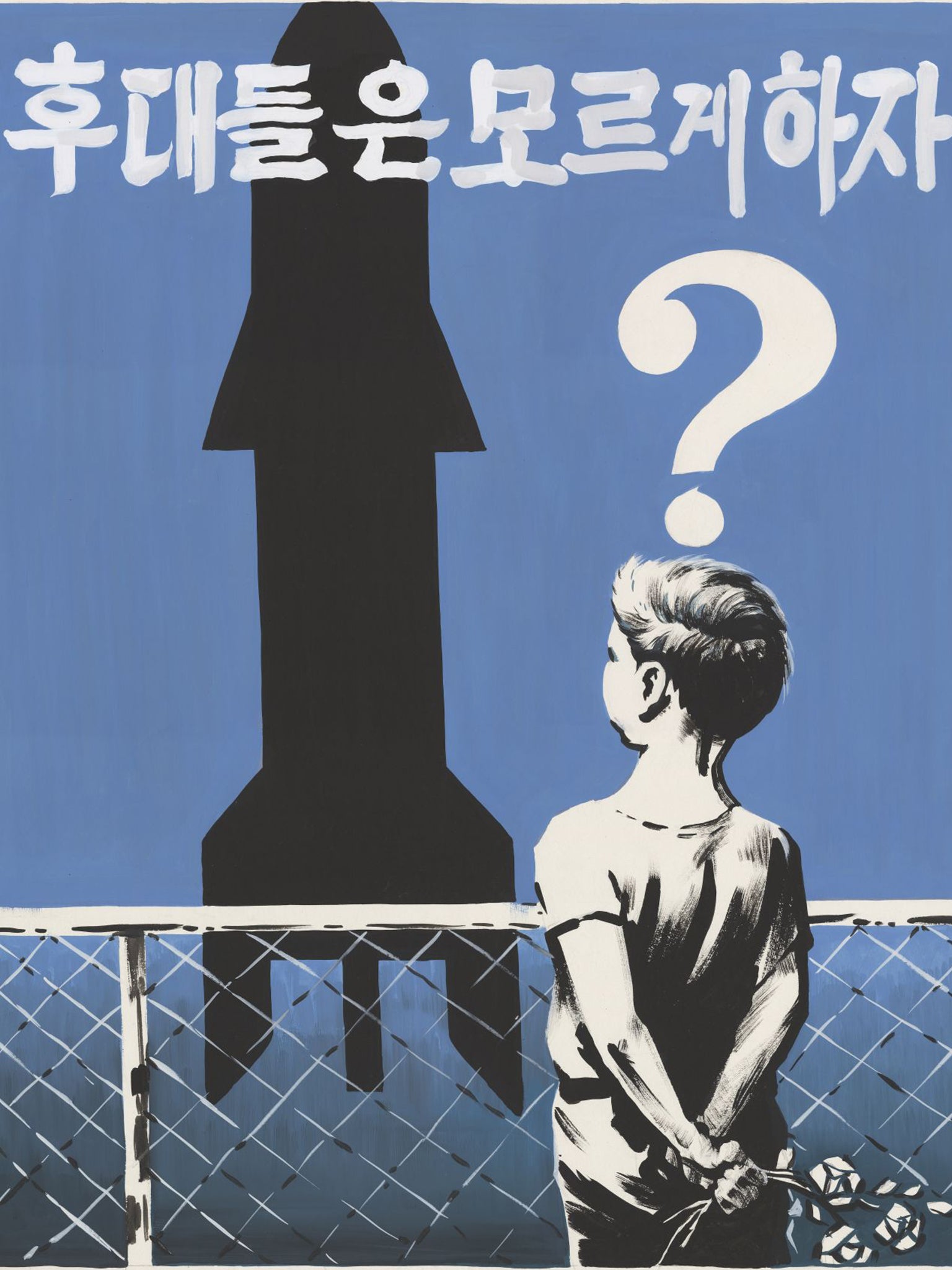
5. ‘US imperialists cannot let their children know the truth’ (1980s or 1990s)
‘You see this in some of the later ones too: the simplistic use of colour to get across the powerful image. Prior to this you saw more obvious comic styles.’
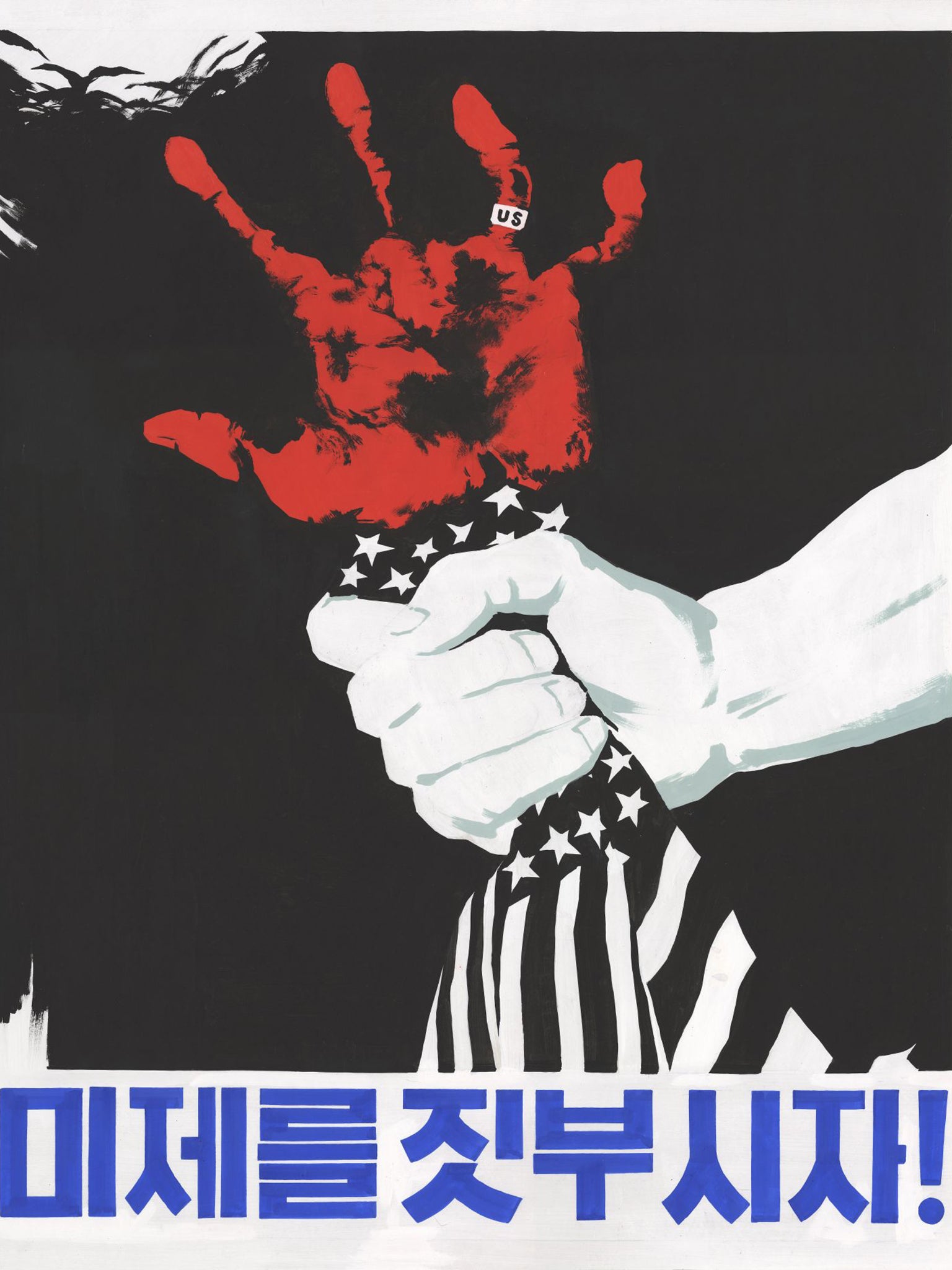
6. ‘Destroy US imperialists!’ (2000s)
‘You don’t need the slogan. It’s like advertising, they know how to deliver a message well.’
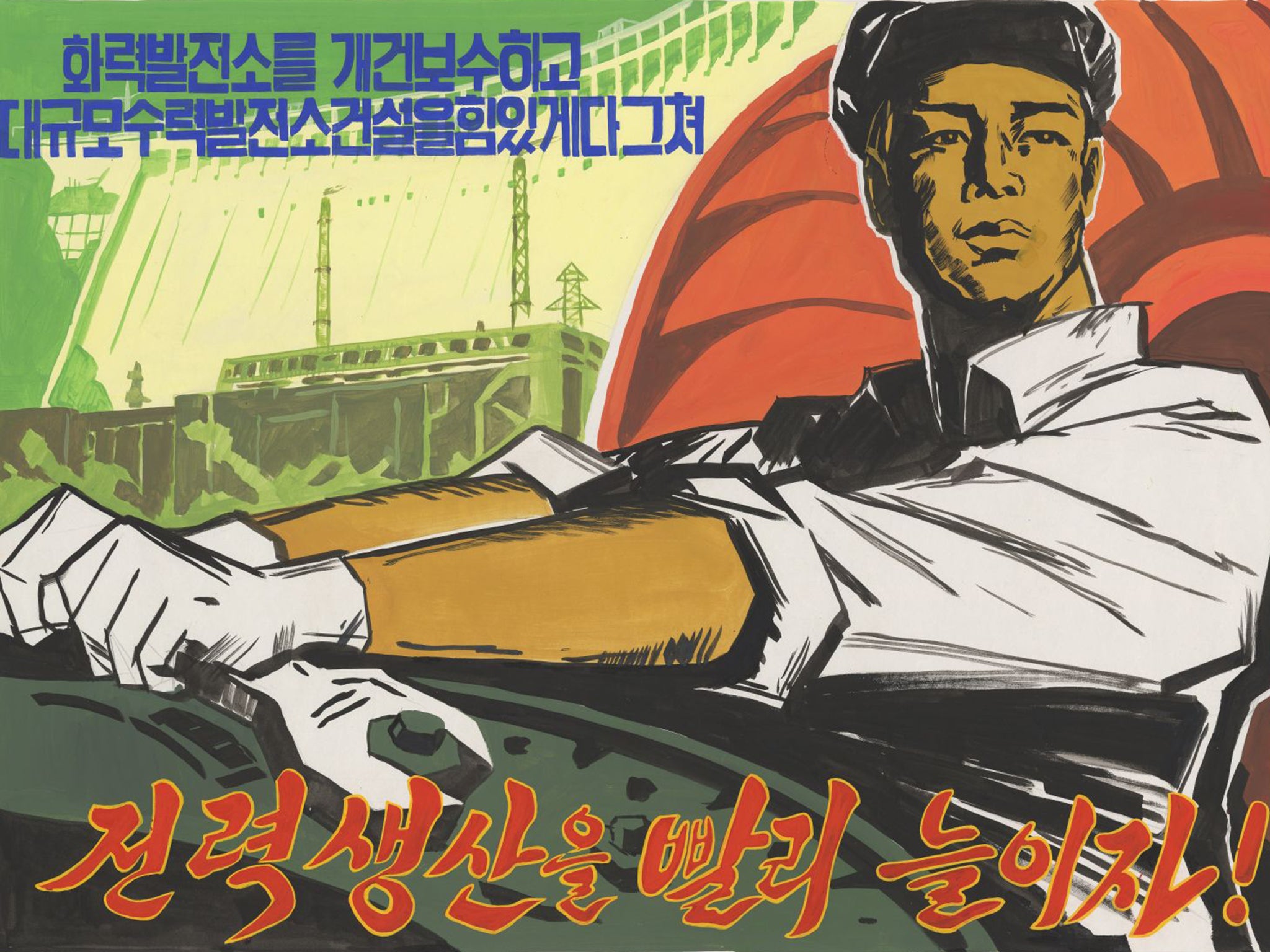
7. ‘Let’s increase electricity production by rebuilding thermal power stations and building large hydroelectric plants’ (late 2000s)
‘In Chinese posters subjects usually look at you directly, but in North Korean posters it’s rare.’
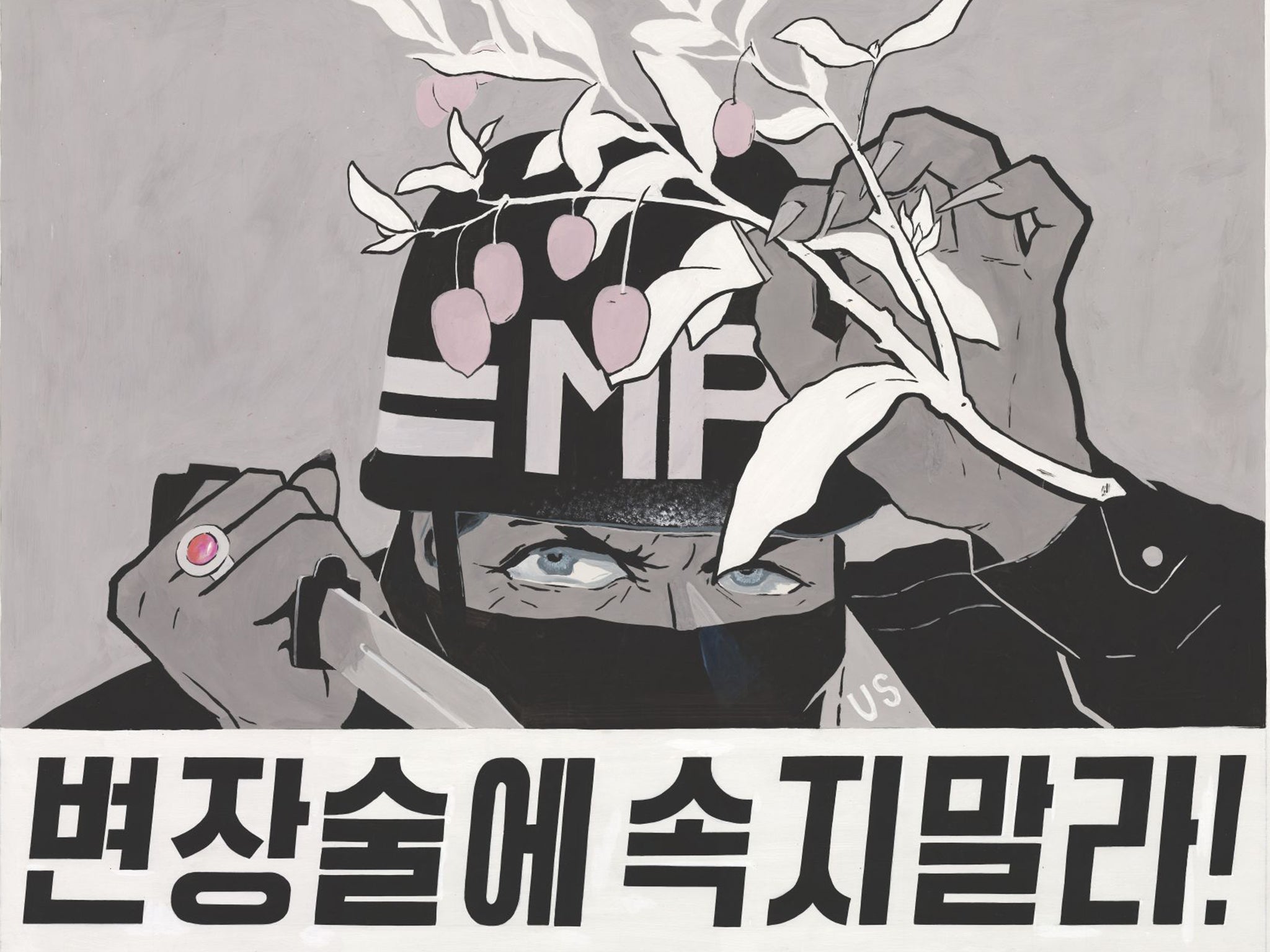
8. ‘Don’t be fooled by their art of disguise!’ (1980s/90s)
‘It’s about internal security with Japan, and the US and South Korea as the big enemies.’
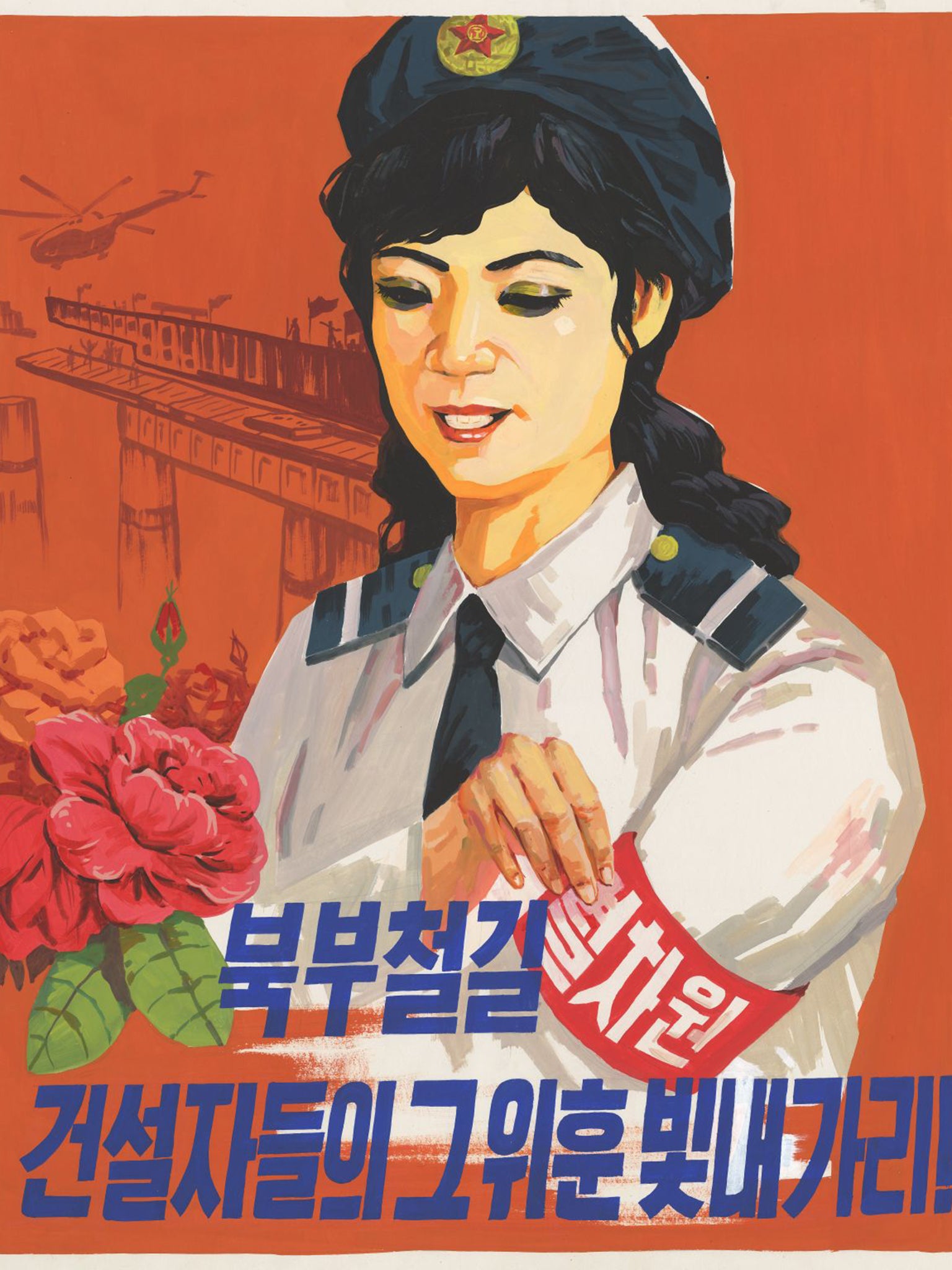
9. ‘Three revolutions, let’s advance the march of grand construction with Chollima [mythical winged horse] speed’ (late 2000s)
‘It’s about the building of the new railways, and she’s even got a Kimjongilia flower that represents Kim Jong-il.’

10. ‘Let the exploits of the northern railway conductors shine!’ (2000s)
‘That’s Chollima with the soldier, the intellectual and the peasant to represent culture, technology and agriculture. After the Korean War Kim Il-sung used the Chollima as a way of saying, “We are going work at lightning speed” and the country produced enormous amounts of iron.’
Join our commenting forum
Join thought-provoking conversations, follow other Independent readers and see their replies
Comments